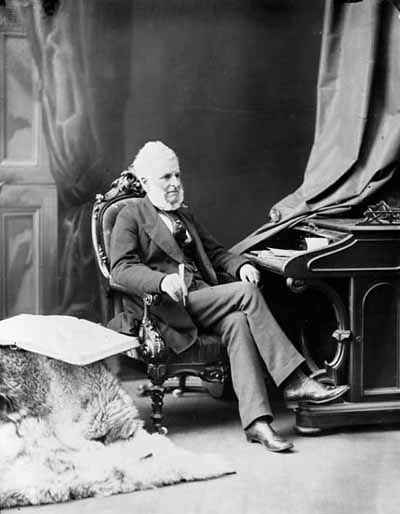Sir Francis Hincks
Sir Francis Hincks
Learn the story behind the monument dedicated to Sir Francis Hincks in the County Courthouse Square.
By Liz Dommasch, Archivist
On the corner of Light Street and Hunter Street in Woodstock, there is a monument dedicated to the first Member of Parliament for North Oxford. Who was this individual and why is he deserving of such a recognition?

Sir Francis Hincks was born in Ireland and arrived in Canada in 1830. He would settle in Toronto where he set up a wholesale import business and would become friends with the Baldwin family, who were a leading Reform family in the Province (Robert Baldwin would later past the Baldwin Act which led to the formation of the County of Oxford in 1850). He would later accept a job as manager for the Farmer’s Stock Joint Bank, but would soon leave that position to become manager of the newly formed Bank of the People. In 1831 he established the newspaper called “The Examiner” with the aim of promoting responsible government (this newspaper would later merge with The Globe in 1855.).
In 1841 he ran as a member of the Reform party in Oxford and would defeat Peter Carroll, Surveyor, West Oxford, by a total of 31 votes to become the first member for North Oxford in the Legislative Assembly of the newly formed Parliament of the Province of Canada. Hincks would be defeated in the 1843 election but re-elected in 1848 and in subsequent elections, sitting in Parliament from 1848 to 1855. During this time he played a significant role in creating Canada’s currency from English pounds to the present dollar and cents we use every day.
In 1851 he would serve as Co-Premier of Canada West, along with A.N. Morin, until 1855. During this time, his vision of a railroad linking British North America led to the establishment of the Grand Trunk Railway, in 1852 (subsequently establishing a railway system within the County) and would help negotiate the Reciprocity Treaty of 1854 with the United States that dealt with the free trade of raw materials across the border.
After serving as Governor of Barbados and British Guiana from 1856-1869, he returned to Canada where he served as Finance Minister in John A. McDonald’s government. During his tenure he would frame the Bank Act of 1871 that laid the foundation of Canada’s banking system.
In 1873 he would retire from politics and move to Montreal where he died, of smallpox, in 1885 at the age of 77.
In 1969, the Historic Sites and Monuments Act designated the monument honouring Sr. Francis Hincks in Woodstock. Hincks Street in Woodstock is also named in his honour.
Photo Credit: Topley Studio / Library and Archives Canada / PA-025466.
